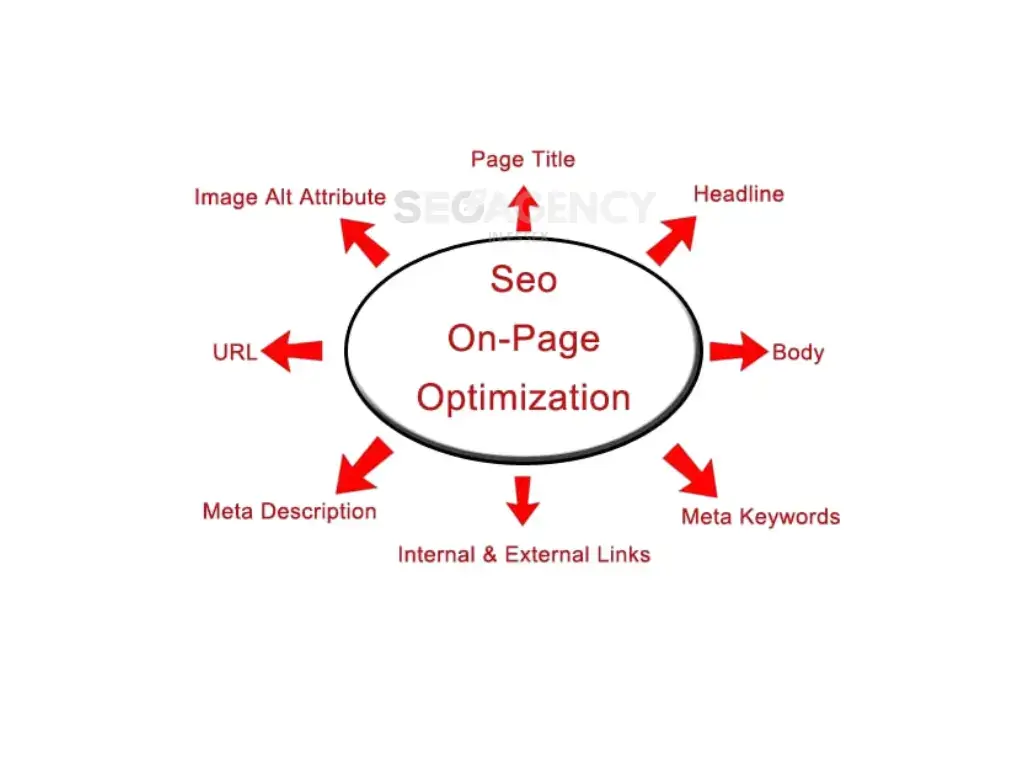A strong online presence is no longer optional for dental practices—it’s essential. Every month, over 1.2 million people search for “dentist near me” on Google. And here comes SEO for dental website.
This statistic highlights how many potential patients are looking for dental services online. In such a competitive environment, a well-planned dental SEO strategy can mean the difference between a thriving practice and one that struggles to attract new patients.
This guide will give you the knowledge and tools you need to master dental SEO in 2025 and beyond. We’ll cover the basics, dive into effective strategies, and explore new trends shaping the digital world for dental practices.
Understanding the Core Principles of Dental SEO

Dental SEO, in its simplest form, is the art and science of optimising your online presence to rank higher in search engine results pages (SERPs) when potential patients search for dental services.
It’s about making your practice easily discoverable by the right people at the right time.
Dental SEO encompasses two primary facets:
- On-page SEO focuses on optimising elements within your website itself. This includes optimising your website’s content, title tags, meta descriptions, header tags, and image alt text to align with relevant keywords and improve user experience.
- Off-page SEO involves factors external to your website that influence your search engine rankings. This encompasses building high-quality backlinks from reputable sources, managing your online reputation through reviews, and ensuring consistent business information across online directories.
For dental practices, local SEO is paramount. Patients typically search for dental services within their geographic area, so ensuring your practice appears prominently in local search results is critical. This involves optimising your Google Business Profile, claiming local citations, and leveraging location-based keywords throughout your online presence.
What is Dental SEO?
Definition and Importance of Dental SEO
Search engine optimisation for dental practices involves optimising a dental website to improve its visibility in search engine results.
The goal of dental SEO is to make it easier for potential patients to find the practice online when they search for relevant terms like “dentist near me” or “teeth whitening services.”
A strong dental SEO strategy is essential for expanding a dental practice’s online presence and attracting new patients in a competitive market.
How Dental SEO Works

Dental SEO works by making ongoing improvements to a dental website so that it ranks higher in search results for relevant queries. These optimisations include:
- Keyword Research: Identifying key phrases potential patients use in their searches, such as “family dentist” or “emergency dental care.”
- Content Creation: Developing high-quality, informative content that provides value to patients and answers common questions about dental care.
- Local Listing Setup: Setting up and optimising local business listings (e.g., Google Business Profile) to ensure your practice appears in local searches.
- Technical SEO: Ensuring the website’s structure, loading speed, and mobile-friendliness meet search engine standards.
Together, these strategies help a dental website rank higher, reach more potential patients, and build trust in the practice’s services.
Benefits of Dental SEO
Dental SEO offers numerous benefits, from increasing online visibility and attracting qualified traffic to expanding a practice’s client base.
By building trust and showcasing expertise, dental SEO helps practices grow sustainably while enhancing credibility with new and existing patients.
1. Improves Online Visibility
Dental SEO increases a practice’s visibility in search engine results pages (SERPs), making it easier for potential patients to find you.
Higher visibility means a greater chance of attracting new patients, helping your practice stand out among competitors.
2. Increases Qualified Traffic
By targeting relevant keywords, dental SEO attracts qualified traffic—visitors actively looking for dental services. This means more website visitors with genuine interest in booking an appointment, leading to a higher rate of conversions.
3. Grows Client Base
SEO can significantly expand a dental practice’s client base. By bringing in new patients through organic search, dental SEO contributes to consistent growth in patient numbers and revenue.
4. Builds Trust and Credibility with Patients
A strong online presence and high search rankings build trust with patients. Effective SEO strategies showcase your expertise and authority, helping establish your practice as a reliable choice and improving patient loyalty and retention.
Investing in dental SEO not only attracts new patients but also strengthens long-term relationships with existing ones, creating a stable foundation for growth.
Dental SEO Strategies

Implementing a robust SEO strategy is essential for increasing a dental practice’s online visibility and attracting new patients. Here’s an in-depth look at the key strategies for dental SEO.
1. Keyword Research and optimisation
Keyword research and optimisation are foundational to any SEO strategy. For dental practices, targeting the right keywords ensures your website appears in relevant searches.
- Conduct In-Depth Keyword Research: Use tools like Google Keyword Planner, Ahrefs, or SEMrush to identify keywords that potential patients are searching for, such as “family dentist,” “teeth whitening near me,” or “emergency dental care.” Make sure to consider both broad and long-tail keywords to capture a variety of search intents.
- optimise Website Content with Target Keywords: Once you’ve identified target keywords, integrate them naturally into your website content. Use primary keywords in key areas like headers, introductory paragraphs, and throughout the text. Avoid keyword stuffing; instead, focus on creating informative and engaging content.
- Use Header Tags to Structure Content: Structure your content with header tags (H1 for main titles, H2 for subheadings, etc.) to improve readability and SEO. Header tags help search engines understand the hierarchy of your content, while also making it easier for users to navigate.
2. Content Creation and Marketing
Quality content not only attracts new visitors but also builds your practice’s credibility as a trusted source of dental knowledge.
- Create High-Quality, Informative Content: Focus on creating content that addresses common patient questions and concerns. Blog topics might include “How Often Should You Visit the Dentist?” or “Understanding Different Types of Dental Fillings.” High-quality content helps answer patient questions and builds trust with your audience.
- Use Content Marketing to Promote Your Practice: Content marketing involves promoting this content across various platforms to reach a broader audience. Share blog posts on social media, create informative videos for YouTube, or email articles to current patients to encourage engagement. Valuable content positions your practice as an authority and can lead to increased referrals.
- Offer Downloadable Resources: Consider creating downloadable guides or checklists (e.g., “Oral Hygiene Tips for Children”) to provide additional value. These resources can attract backlinks from other websites, which can enhance SEO.
3. Technical SEO for Dental Websites
Technical SEO ensures your website is functioning optimally, providing a smooth user experience and making it easier for search engines to crawl and index.
- Improve Website Speed: A fast website not only improves user experience but is also a ranking factor for search engines. Compress images, minify CSS and JavaScript, and consider a reliable hosting provider to ensure your pages load quickly.
- Mobile-Friendliness and Secure Protocol (HTTPS): With most searches happening on mobile, a mobile-friendly design is essential. Use responsive design to ensure your site adapts well to all screen sizes. Additionally, secure your website with HTTPS to build trust with users and improve rankings, as Google favours secure websites.
- Fix Technical Issues Regularly: Regularly monitor and address issues like broken links, duplicate content, and slow-loading pages. Using tools like Google Search Console can help you keep track of these issues and ensure your website remains in good health.
4. Local SEO for Dentists
Local SEO is crucial for dental practices, as most patients search for providers in their immediate area. Local SEO tactics help you connect with people actively seeking dental services near your location.
- Claim and optimise Your Google My Business (GMB) Listing: Set up and optimise your GMB profile with accurate details, including your address, phone number, website, and hours. Regularly update your GMB listing with photos, posts about special offers, or details on new services.
- Use Local Keywords and Create Location-Specific Content: Include city or neighborhood names in keywords, such as “pediatric dentist in [City].” Consider creating location-specific landing pages for each service area to help with local search visibility.
- Build High-Quality Local Citations: A citation is any mention of your practice’s name, address, and phone number (NAP) on external websites. List your practice in trusted local directories (e.g., Yelp, Healthgrades, local business chambers) to enhance your local SEO. Consistent citations increase your authority and improve your local search rankings.
By following these dental SEO strategies, you’ll create a well-rounded, effective online presence that attracts more local traffic, builds authority, and brings more patients to your practice.
On-Page Optimisation for Dental Websites

On-page optimisation is essential for making your dental website search-friendly and user-focused. These steps will improve your site’s performance, search engine ranking, and user engagement.
1. Optimising Title Tags and Meta Descriptions
Title tags and meta descriptions are the first elements users see in search results, so optimising them is crucial for attracting clicks.
- Use Descriptive Title Tags: Each page’s title tag should clearly describe its content and include relevant keywords, like “Cosmetic Dentistry in [City]” or “Family Dentist Services.” Aim for under 60 characters to ensure full display in search results.
- Write Compelling Meta Descriptions: Meta descriptions summarise page content and encourage clicks. Use engaging language that highlights key points and includes keywords. Keep descriptions around 150–160 characters for optimal display.
2. Content optimisation
Well-structured content makes it easier for both users and search engines to understand and engage with your site.
- Use Header Tags (H1, H2, H3): Structure your content using header tags to create a clear hierarchy. For example, use H1 for the main title, H2 for section titles, and H3 for sub-sections. This organisation improves readability and SEO.
- optimise Images and Alt Tags: Use high-quality images and compress them to improve load times. Add descriptive alt tags to images, which helps search engines understand the content and improves accessibility for visually impaired users.
3. Website Speed and Performance
A fast-loading website enhances user experience and is favored by search engines.
- Use Google PageSpeed Insights: Identify any slow-loading elements using PageSpeed Insights and implement recommended fixes.
- Compress Images and Enable Caching: Compress large images and leverage browser caching to store site elements locally, speeding up load times for returning users.
4. Mobile Friendliness
With many users searching on mobile, a mobile-friendly design is essential for a positive user experience.
- Responsive Design: Ensure your website adjusts to various screen sizes, providing an intuitive and easy-to-navigate experience on mobile.
- Mobile-Friendly Layout: Avoid cluttered designs and use larger buttons and clear calls to action to improve mobile usability and user engagement.
5. Secure Websites (HTTPS)
Security is a top priority for users and search engines alike, making HTTPS a must for any website handling personal information.
- Install a Trusted SSL Certificate: Use a reliable SSL certificate to enable HTTPS, which encrypts data and builds trust.
- Boost Trust and Credibility: HTTPS not only secures user data but also signals credibility to both users and search engines, which can positively impact rankings.
By implementing these on-page optimisation practices, your dental website can rank higher in search results, load faster, and provide a better experience for users, helping to attract and retain more patients.
Local SEO and Online Presence for Dental Websites
Building a strong local SEO strategy is essential for dental practices to reach nearby patients and improve online visibility. Here are the key steps to establish a robust local presence.
1. Google Business Profile optimisation
A well-optimised Google Business Profile (GBP) can significantly improve your visibility in local searches and attract more patients.
- Claim and optimise your Google Business Profile: Make sure your GBP is claimed, verified, and regularly updated. Provide accurate details such as the practice’s name, address, phone number, and hours of operation.
- Add High-Quality Photos: Upload photos of the office, dental staff, and facilities. High-quality images make your profile more attractive and credible to potential patients.
2. Local Keywords and Content
Using local keywords in your content can improve your website’s rankings for location-based searches.
- Incorporate Local Keywords: Use keywords like “family dentist in [City]” or “cosmetic dentistry [Neighborhood]” within your content, title tags, and meta descriptions.
- Create Location-Specific Landing Pages: If your practice serves multiple areas, create dedicated landing pages for each location. Include unique content relevant to each area to attract more local searchers.
3. Leveraging Social Media for SEO
Social media can amplify your reach and indirectly benefit your SEO by increasing visibility and engagement.
- Share Content Consistently: Post relevant blog articles, promotions, and patient tips on platforms like Facebook, Instagram, and Twitter to keep your audience engaged and attract new followers.
- Engage with Followers: Respond to comments and messages to foster a community and show that your practice is approachable and responsive. Active engagement can help attract new patients and improve brand loyalty.
4. Online Reviews and Reputation Management
Online reviews are a powerful tool for building trust with potential patients and improving local search rankings.
- Encourage Patients to Leave Reviews: Ask satisfied patients to share their feedback on your Google Business Profile and other review sites. Positive reviews build credibility and help your practice stand out in search results.
- Respond to Reviews: Whether a review is positive or negative, respond professionally and courteously. Addressing feedback shows patients that you value their experience and are committed to continuous improvement.
By focusing on Google Business Profile optimisation, local keyword usage, social media engagement, and reputation management, your dental practice can strengthen its local SEO, attract nearby patients, and build a strong online presence.
Link Building and Online Reputation for Dental Websites

Link building and online reputation management are essential for improving a dental practice’s search rankings and credibility. Here are key strategies to build authority and enhance your online reputation.
1. Building Backlinks
Backlinks from reputable sites signal to search engines that your website is a trusted source, improving your search rankings.
- High-Quality Backlinks: Focus on acquiring backlinks from reputable and relevant sites, such as health directories, dental associations, and local news sites. Quality backlinks enhance your website’s authority and boost SEO.
- Guest Blogging: Write informative guest posts for health and dental websites, or local blogs. In your bio or within the content, include a link back to your website, helping you reach new audiences while building authority.
- Engage in Online Communities: Participate in forums and communities related to dental health, such as Reddit or Quora, by answering questions and sharing expertise. Be helpful and professional, and include links to your website where relevant. This can drive traffic and enhance credibility.
2. Online Reputation Management
A positive online reputation builds trust with potential patients and helps your practice stand out from competitors.
- Encourage Patient Reviews: Ask satisfied patients to leave reviews on Google, Yelp, or Healthgrades. Positive reviews enhance your practice’s credibility and improve local SEO.
- Respond to Reviews: Address feedback professionally, whether positive or negative. Thank patients for positive reviews and respond constructively to any negative feedback. This shows you care about patient experience and are committed to improvement.
- Monitor Mentions of Your Practice: Use tools like Google Alerts to track mentions of your practice online. Engaging with these mentions allows you to manage your reputation and join relevant discussions about your services.
By building high-quality backlinks and managing your online reputation, you can strengthen your practice’s online presence, improve search rankings, and attract more patients.
These strategies help establish your practice as a reliable and trusted choice in dental care.
Measuring and Analysing Website Performance for Dental Websites
Tracking and analysing website performance is key to refining your dental SEO strategy. Here’s what to focus on:
1. Key Metrics to Track
Monitor these essential metrics to assess your website’s effectiveness:
- Website Traffic: Measure total visitors and traffic trends.
- Engagement Rate: Track bounce rate, session duration, and pages per session to see how users interact with your site.
- Conversion Rate: Gauge the percentage of visitors completing actions like booking an appointment.
2. Using Analytics Tools
Analytics tools help provide valuable insights:
- Google Analytics: Track traffic, top pages, and user engagement.
- SEMrush and Ahrefs: Monitor keyword rankings and backlinks, and Analyse competitors’ strategies to strengthen your own.
3. Adjusting Strategies Based on Data
Use your data to refine and adapt your SEO approach:
- Refine SEO Strategies: Identify top-performing content and adjust keywords, structure, or topics based on effectiveness.
- Regular Monitoring: Continuously track performance to identify trends and improvement areas, staying responsive to changes.
By tracking these metrics and using analytics tools, you can improve user engagement, refine SEO strategies, and attract more patients to your dental practice.
Working with a Dental SEO Agency
Partnering with a dental SEO agency can help your practice grow by increasing online visibility and attracting more patients. Here’s what to know about dental SEO services, pricing, and choosing the right agency.
What are Dental SEO Services?
- Dental SEO services focus on optimising your website for search engines through strategies like keyword research, content creation, and technical SEO.
- Agencies provide ongoing support, monitoring, and optimisation to enhance website performance and drive consistent traffic.
What Determines Dental SEO Pricing?
- Pricing depends on the scope of work, the agency’s expertise, and the competitiveness of your location and target market.
- Agencies may charge hourly, monthly, or project-based fees, with costs varying based on service level and complexity.
How to Choose a Dental SEO Marketing Agency
- Research the agency’s experience in the dental industry and its overall reputation.
- Review portfolios and case studies to assess their success with other dental clients.
- Ask for referrals from past clients and check online reviews to ensure reliability and client satisfaction.
A dental SEO agency can be a valuable partner, helping your practice achieve sustainable growth and increased visibility through specialised SEO strategies.
Conclusion
Dental SEO is essential for building a strong online presence and attracting new patients. By leveraging keyword research, content creation, and technical SEO, dental practices can improve search visibility and website performance.
Regularly monitoring performance is key to identifying areas for improvement and staying competitive.
Start optimising your dental website today to bring in new patients and grow your practice. Use the strategies in this guide to boost your dental SEO and elevate your online presence.




